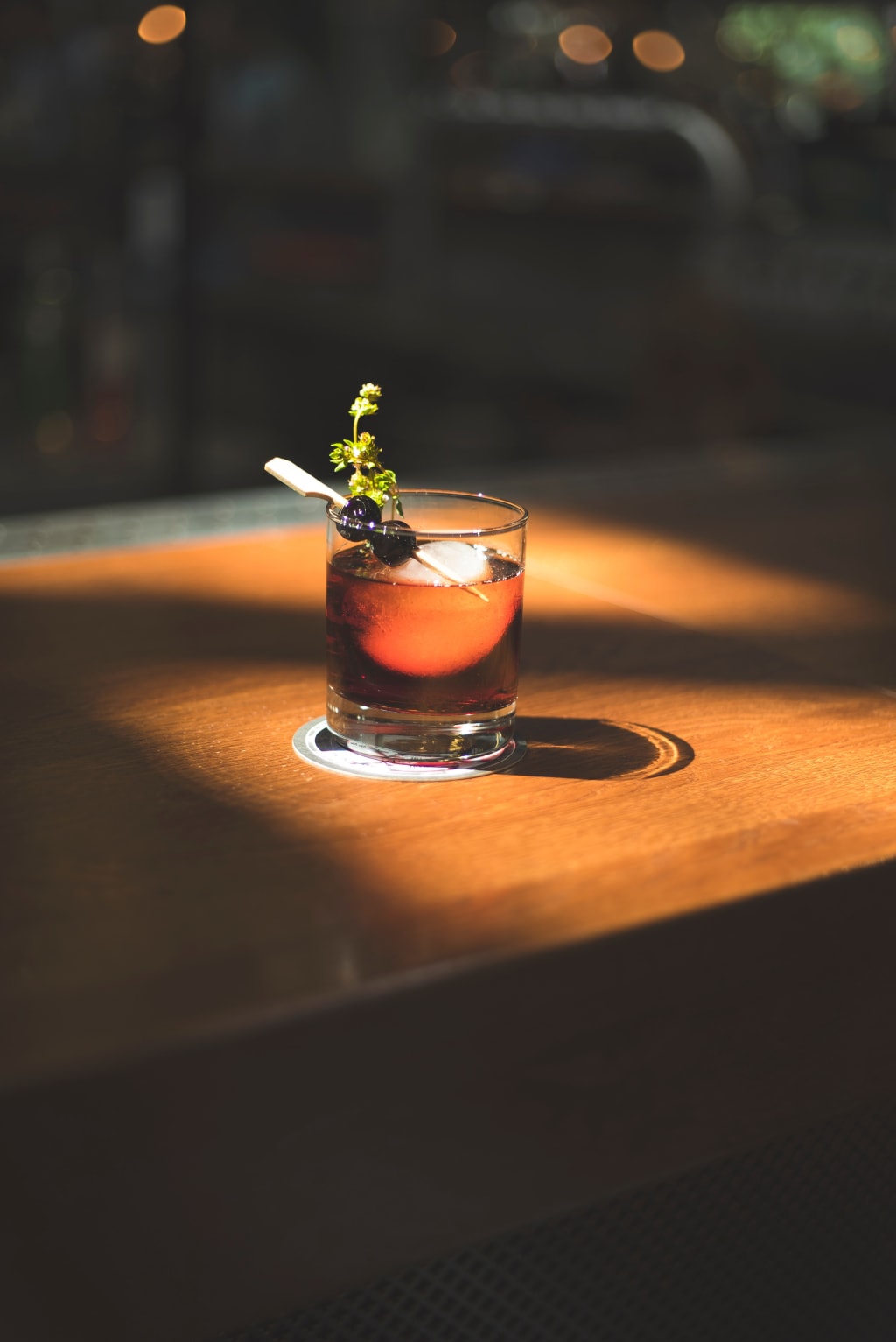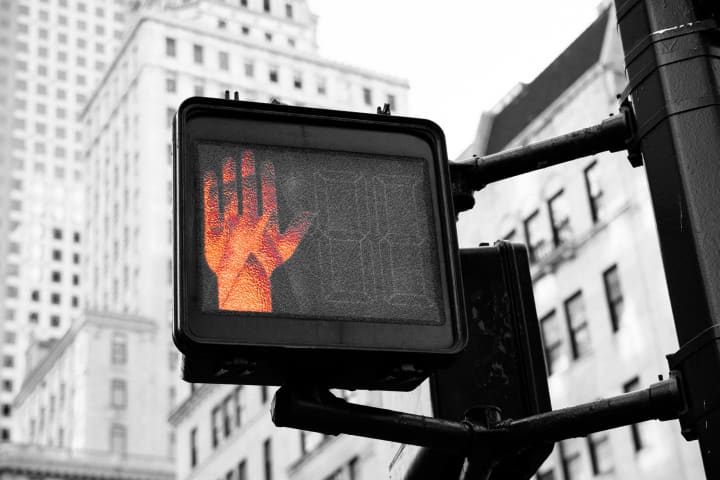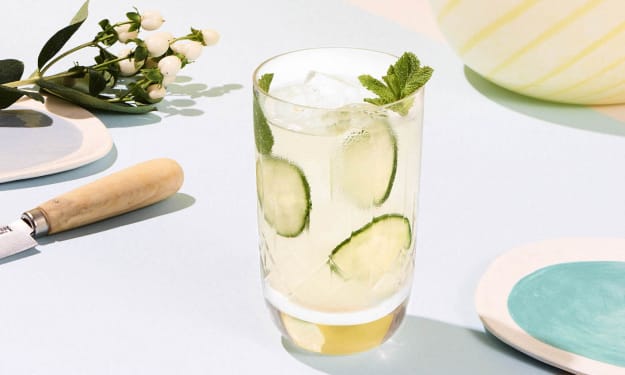The History of the Cocktail
Here's a brief history of the cocktail, from the invention of ice to the proliferation of the term.

What is a cocktail?
In order to best understand the history of the cocktail, it’s best to first understand what exactly a cocktail is. Is a martini a cocktail? What about a rum and coke? Modern usage and definitions classify just about any alcoholic drink as a cocktail. Officially though, a true cocktail is an alcoholic drink made of a liquor, water, sugar, and bitters. This definition has become a bit more lax over the years, but this basic formulation is a good place to start.
Early Definitions

Photo by ActionVance on Unsplash
The first official naming and definition of a cocktail came from a New York newspaper, which printed a reference to the cocktail as “a stimulating liquor, composed of spirits of any kind of sugar, water, and bitters—it is vulgarly called "bittered sling." The 'sling,' still occasionally used (you've probably heard of a gin sling), was a popular precursor to the cocktail that simply involved sugar, water, and liquor. Easy, right?
The "bittered sling," or cocktail, adds an additional key ingredient though: bitters. Bitters is meant to be the “stimulating” part of a cocktail, and it was designed to be a drink with an extra kick. In fact, according to David Wondrich, editor of and writer for Imbibe magazine, the cocktail may have originally begun as a combination of liquor, sugar, water, and hot pepper. This addition of pepper, or another substance with such a stimulating kick, may have been the original referent of the term “cocktail,” various drinks using liquor, water, and a “cocktail,” which would refer to this extra ingredient. Nowadays, most cocktails don't involve hot pepper, and we certainly don't use the term to refer to spicy substances. This change of terms seems to be a significant point of origin in the history of the cocktail.
The Cocktail in New York

Photo by Oliver Niblett on Unsplash
This New York article marks just one small part in the history of the cocktail. The development of the drink and its proliferation in society are much more complex processes. Prior to any mention of the word cocktail, certain aspects of drinking culture had to fall into place. This begins primarily in Western Europe, especially Britain, with the introduction of proto-bars, where people would be served drinks and mingle. This began originally with punch, drinks made of a variety of liquors, sweet fruit juices, and bright flavors like lemon. Originally developed as party drinks, these concoctions helped to spur the creation of “punch houses,” where some of the earliest forms of bartending as we know it can be seen.
The use of the term “cocktail” first occurred in the early 19th century, though the drink itself—a mix of sugar, water, liquor, and bitters—had surely existed well prior. Most of the original uses of this term attribute the drink, or at least the name, to New York. Didn't you ever wonder what makes a Manhattan a Manhattan? Though its origins in vernacular language are difficult to trace, its early use in literature, at least, suggests that the cocktail was considered an American drink, and often scoffed at by the Brits. However, times would change, and nowadays you can get a cocktail just about anywhere in the world.
The Spread of the Cocktail

Photo by NASA on Unsplash
Two necessary components for this proliferation of the cocktail were industrialization and globalization. As people began to migrate and communicate with greater efficiency in the 19th and 20th centuries, mentions of particular drinks in literature found broader and broader reaches, and enabled a standardization of drink recipes. Prior to this, those who would mix drinks may have been following such a recipe, but they wouldn’t necessarily know it. It's difficult to gather evidence regarding the matter. However, the literature we do have seems to indicate that the cocktail was first regarded as an American invention, and its in America that most mentions of it can be found.
Beyond literature such as newspaper articles and novels that may mention or define particular drinks, the earliest evidence we have for the widespread popularity of the cocktail is in recipe books—more specifically, bartenders guides. Particularly noteworthy was Jerry Thomas' Bartenders Guide, a book which is widely regarded to have fathered modern bartending as we know it. In it, you can find some pretty wild drinks: recipes combining wine and milk, or the invention of the Blue Blazer, for example. The Blue Blazer is, of course, a cocktail that involves lighting whisky on fire.
With the advent of standardized, named recipes for drinks, and the increased ability to communicate this information across geographical space, the cocktail quickly became a fixture of culture in the West.
Prohibition

Photo by Kai Pilger on Unsplash
If there’s anything I remember from history class, it’s that prohibition did not work. Though temperance movements had great popularity in their time, this era, in fact, had a very important role in the history of the cocktail. The social practice of drinking in speakeasies furthered the standardization and globalization of drinking practices, and this era also served to spread the cocktail out internationally (while in the current era, New York's speakeasy bar scene has seen a very successful resurgence). When drinking was officially prohibited in the United States, cocktail culture shifted to become a Polynesian fixture. Shortly thereafter, the re-introduction of visible drinking culture in the United States brought with it these new influences, and island-themed hubs of cocktail culture in San Francisco and other West Coast cities brought us all sorts of new recipes for tasty mixed drinks.
Since the mid-20th century, many cocktail recipes have fallen out of favor, while new ones were introduced, inspiring a list of signature cocktails to enjoy anywhere, anytime. Certain aspects are both geographically and historically consistent, and it's no wonder that variations on the theme of liquor, sugar, and bitters have become standards in our culture.
About the Creator
Nicola P. Young
Lover of Books, Saxophone, Blogs, and Dogs. Not necessarily in that order. Book blogger at heartofinkandpaper.com.






Comments
There are no comments for this story
Be the first to respond and start the conversation.